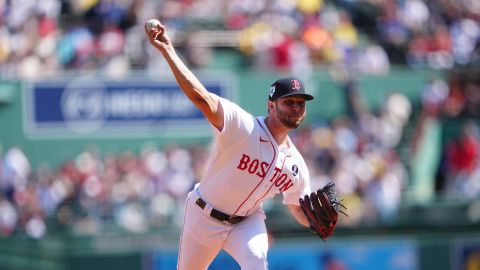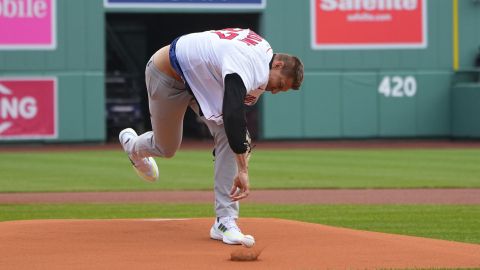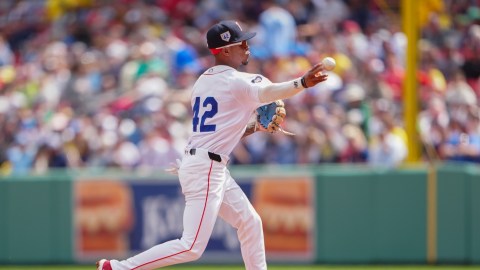 One glance at David Ross‘ stat line this spring training paints an ugly picture. But then the veteran catcher speaks, and it becomes clear why the Red Sox made bringing him in an offseason priority.
One glance at David Ross‘ stat line this spring training paints an ugly picture. But then the veteran catcher speaks, and it becomes clear why the Red Sox made bringing him in an offseason priority.
Ross went 0-for-3 against the Yankees on Wednesday, dropping his spring average to .050 (1-for-20) and his on-base percentage to .240. He has struck out seven times in 20 at-bats, and his lone hit was a three-run home run against the Rays on March 10. Despite the lack of production at the plate, though, Ross is working to get more familiar with the team’s pitching staff, and Wednesday was another step forward in that regard.
Red Sox starter Felix Doubront got lit up in the second inning against the Bronx Bombers. He allowed four runs on five hits in the frame, which paved the way for a 4-0 New York win. But while Doubront got hit hard, Ross was quick to rush to his pitcher’s defense after the game, even shouldering much of the blame.
“I was out of synch with him, not knowing his pitching style and how he gets out of trouble,” Ross told reporters in Tampa. “I think that bad inning was as much to do with me as anything.”
“I don’t think I called a great game, especially in that inning. It got better as we went. But I really think I was a big hinderance in that bad inning.”
Given Ross’ marginal offensive potential, the 36-year-old’s leadership and game-calling skills need to be apparent in order to justify the two-year, $6.2 million deal he signed with the Red Sox this offseason. Seeing Ross shoulder the blame on Wednesday doesn’t immediately prove a whole lot, but such accountability is still refreshing. Manager John Farrell stressed the importance of each player in the Red Sox’ clubhouse holding himself accountable this season, and it’s a theme that seems to have taken off in the months since the skipper’s hiring.
What was most encouraging about Ross standing up for his pitcher, though, was his acknowledgment that adjustments needed to be made and were made in the wake of the second-inning implosion. Anyone can stand up and take the heat following a difficult team performance, but when flaws can be recognized and overall damage can thus be minimized, the potential for success becomes much greater. There were too many times last season when things spiraled out of control for the Red Sox’ starters, and it led to short outings and the bullpen consistently getting taxed.
Take away the second inning on Wednesday, and Doubront’s outing wasn’t all that bad. It looked as if the left-hander had a one-way ticket to the showers, but he battled back to pitch 2 1/3 more scoreless innings before exiting in the fifth. That not only kept the Red Sox in the game, but it meant valuable time for the two battery mates.
“What I want to learn is the fixes mechanically,” Ross said. “I learned today [that] posture is a big deal for him. If I learn that, I can coach in the middle of a pitch or the middle of an at-bat, ‘That one ball, you cut your changeup. You’re just bending over and getting to the side of it. Keep your posture.’ He’ll be like, ‘OK.’ That’s the thing I want to learn — to fix the problem in the middle of the battle.”
It’s that “let’s fix this thing, here and now” mindset that needs to be adopted by the entire team. (And it appears the wheels are already in motion.) It’s especially important when it comes to the starting pitching, though, and Ross could play a big role in getting everyone on the same page.
Have a question for Ricky Doyle? Send it to him via Twitter at @TheRickyDoyle or send it here.




